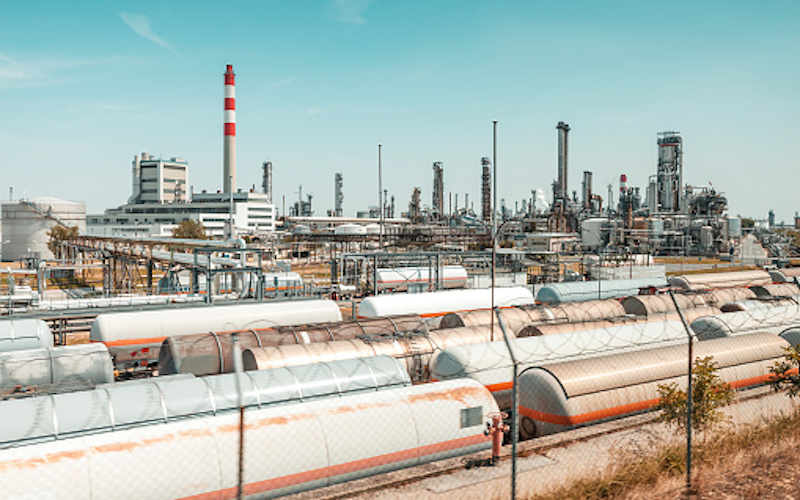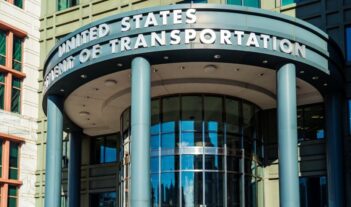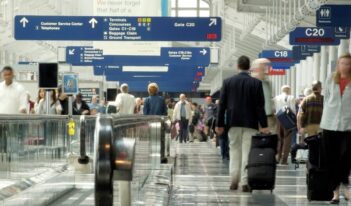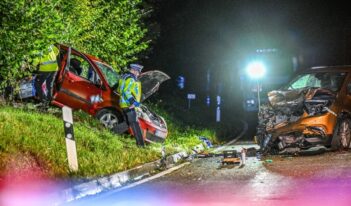
Proposed rule aims to make it easier to ship liquefied natural gas by rail.
A new regulation from the Trump Administration may soon make it easier for U.S. companies to ship large quantities of liquefied natural gas (LNG), an increasingly valuable product. But the new regulation also carries great risks.
The Pipeline and Hazardous Materials Safety Administration (PHMSA) recently released a proposed rule that would allow for railroads to transport LNG in bulk and without obtaining special permits. Critics, however, worry that PHMSA is acting too quickly and disregarding certain safety concerns.
LNG is a cryogenic liquid—a substance that must be refrigerated below -90°C (-130°F) to maintain its liquid state. Since liquids are more compact than gases, large volumes of substances like LNG can be transported by freight trains.
PHMSA states that LNG is “odorless, colorless, non-corrosive, and non-toxic,” but safety concerns remain. LNG has traditionally been shipped by road or sea, and current regulations only allow the bulk transportation of LNG by rail after a shipper has obtained special approval from PHMSA or the Federal Railroad Administration. Observing that LNG is similar in nature to other substances that may be shipped by rail, the Association of American Railroads petitioned PHMSA to allow LNG to be shipped by rail in standard tank cars.
The issue of LNG transportation reached the highest levels of the U.S. government. In an executive order, President Trump noted that the current LNG regulations were drafted almost 40 years ago when the industry was less developed. As part of an effort to upgrade American energy infrastructure, the President specifically requested that the U.S. Department of Transportation amend the regulations to “treat LNG the same as other cryogenic liquids and permit LNG to be transported in approved rail tank cars.”
Just over six months after the executive order, PHMSA issued its proposed rule.
The proposed rule would permit the shipping of LNG in DOT-113 tank cars, which routinely transport other cryogenic liquids such as liquid hydrogen, nitrogen, and ethylene. Since LNG has similar properties to these liquids, PHMSA anticipates that the cars would be suitable for this task. PHMSA says that it also considered creating specifications for a new type of tank car that would be able to transport LNG over a longer timeframe, but it concluded that this process would only delay the rulemaking process.
The proposed rule also raises and seeks public comment on various operational issues designed to reduce safety risks should a rail accident occur. Since LNG is a hazardous material shipped at high pressure, a derailment or collision involving a tank car can have severe effects.
PHMSA is considering several methods for reducing risk. Following a safety recommendation from the National Transportation Safety Board, PHMSA has noted that cars containing LNG could be arranged a safe distance from the train crew in the locomotive. It also has suggested that speed restrictions could be imposed on trains carrying LNG, or that additional routing requirements be fulfilled when scheduling rail shipments of LNG.
Due to a lack of data on LNG rail shipments, PHMSA has not yet proposed any concrete, definitive rule changes addressing these operational issues. PHMSA anticipates that freight trains will only carry a few LNG cars at a time and the agency finds it “uncertain” whether the industry would grow to the point where entire trains would be devoted to LNG.
In a letter to PHMSA, U.S. Senators Ron Wyden (D-Ore.) and Jeff Merkley (D-Ore.) expressed concern that the agency had not considered all the risks the proposed rule might create. They recalled that there have been two incidents since 2011 where the protective linings of cryogenic tank cars have been breached. Since the LNG industry continues to grow, the senators worry that increased rail transport of LNG will lead to more such incidents.
The senators have reason to be concerned. In 2016, a crude oil train derailed and caught on fire in their home state of Oregon. The accident released 42,000 gallons of oil into the Columbia River Gorge. Due to the geography of the area, emergency response crews faced difficulties in quickly reaching the site. The senators noted that LNG’s high flammability can cause even hotter and more explosive fires than crude oil, a fact that the proposed rule does not cover in detail.
Environmental advocacy groups have similarly criticized the proposed rule. In a comment, Bradley Marshall and Jordan Luebkemann of Earthjustice have stated that PHMSA’s proposal is “unlawful” and fails to address potential adverse effects. Since LNG is more explosive than other cryogenic liquids being shipped by rail, an LNG accident in a populated area could have disastrous consequences.
Marshall and Luebkemann have reportedly found that 3.4% of DOT-113 tank cars have been damaged since 1980. Furthermore, they have observed that PHMSA provided no new data or justification to show that the safety of these tank cars has improved.
PHMSA received almost 400 comments before the comment period closed on January 13, 2020. The agency will now have to consider these comments before issuing any final rule.



